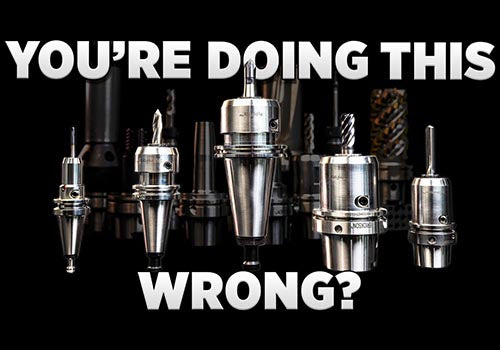
Choosing the Right Type of CNC ID & OD Turning Toolholder for Your High-Precision Machining Needs
Share
CNC turning is a popular machining process used in various industries, including aerospace, automotive, medical, and many others. CNC turning involves the use of cutting tools to remove material from a rotating workpiece to create high-precision parts. The toolholder is a critical component of the CNC turning process, as it holds the cutting tool in place and controls the cutting process.
In this blog post, we will discuss the different types of CNC ID and OD turning toolholders available in the market and help you choose the right one for your high-precision machining needs.
Introduction to CNC Turning Toolholders
A CNC turning toolholder is a device that holds the cutting tool in place during the machining process. It is designed to maintain the tool's stability and accuracy while cutting through the workpiece. There are two types of CNC turning toolholders: ID (internal diameter) toolholders and OD (external diameter) toolholders.
ID Toolholders
ID toolholders are used for machining the internal diameter of a workpiece. These toolholders are usually designed with a shank that fits into the CNC machine's tool turret and a bore that holds the cutting tool. ID toolholders are available in various configurations, including boring bars, boring heads, and collet chucks.
OD Toolholders
OD toolholders are used for machining the external diameter of a workpiece. These toolholders are designed with a shank that fits into the CNC machine's tool turret and a clamping mechanism that holds the cutting tool. OD toolholders are available in various configurations, including turning toolholders, grooving toolholders, and threading toolholders.
Factors to Consider When Choosing a CNC Turning Toolholder
Choosing the right type of CNC turning toolholder is critical to achieving high-precision machining results. Here are some factors to consider when selecting a toolholder for your CNC turning process.
Material
The material used to make the toolholder affects its durability and performance. Toolholders are usually made of steel, carbide, or ceramic. Steel toolholders are suitable for general-purpose machining, while carbide and ceramic toolholders are ideal for high-speed and high-precision machining.
Rigidity
The rigidity of the toolholder is essential for maintaining cutting accuracy and preventing tool deflection. Toolholders with a larger diameter and thicker walls are more rigid and can withstand higher cutting forces.
Toolholder Configuration
The toolholder configuration depends on the type of cutting operation and the cutting tool used. ID toolholders are available in various configurations, including boring bars, boring heads, and collet chucks. OD toolholders are available in turning toolholders, grooving toolholders, and threading toolholders.
Coolant System
A coolant system is necessary to remove heat generated during the machining process and to lubricate the cutting tool. Toolholders with internal coolant channels are ideal for high-speed and high-precision machining.
Toolholder Brand and Price
The brand and price of the toolholder can also influence your decision. High-quality toolholders from reputable brands are usually more expensive but offer better performance and durability.
Conclusion
Choosing the right type of CNC turning toolholder is crucial for achieving high-precision machining results. When selecting a toolholder, consider factors such as material, rigidity, toolholder configuration, coolant system, and brand and price. By choosing the right toolholder, you can ensure stability and accuracy during the machining process and produce high-quality parts.
We hope this blog post has provided you with valuable insights into choosing the right type of CNC ID & OD turning toolholder for your high-precision machining needs. If you have any questions or comments, feel free to leave them in the comments section below.




